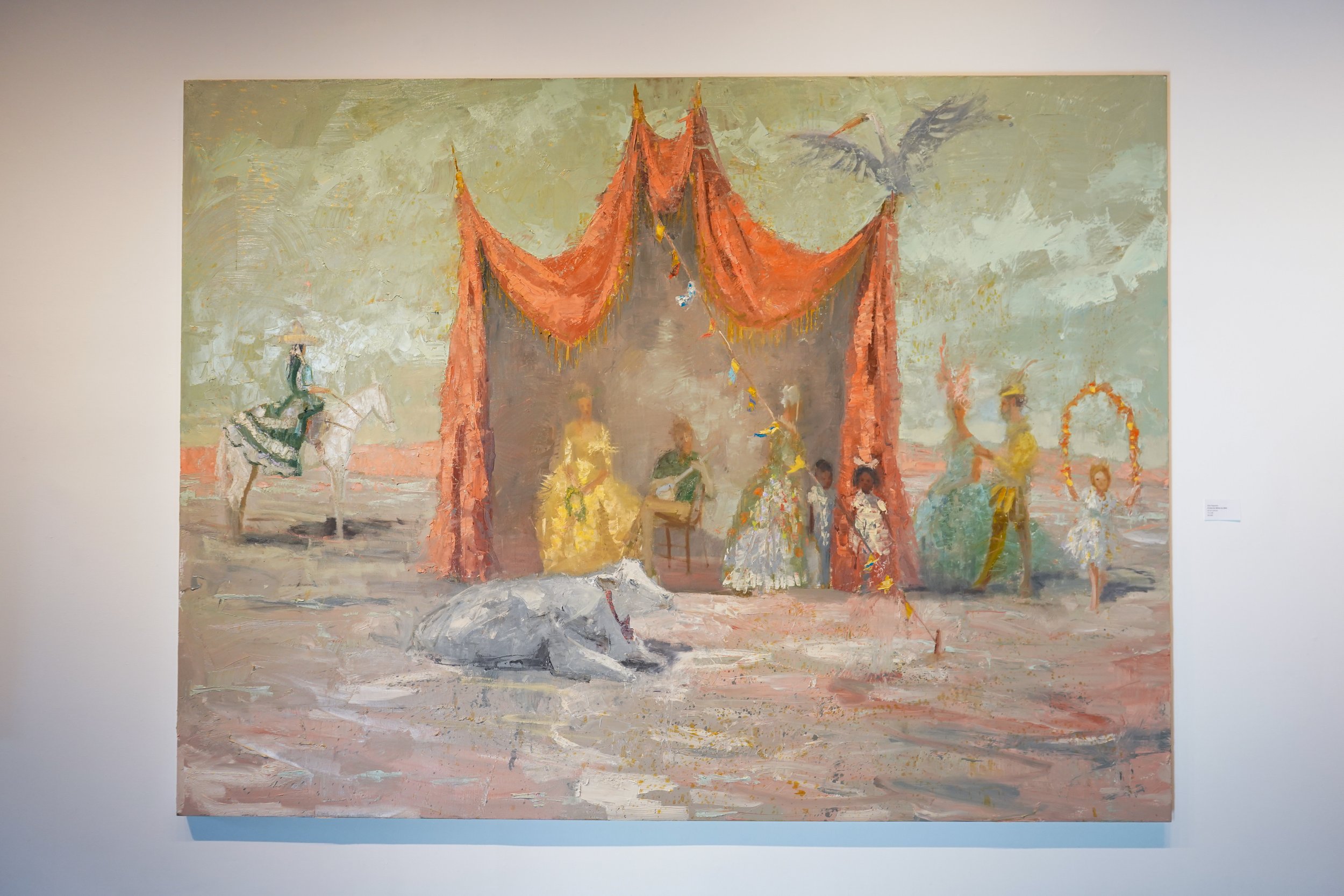Canopy
There's a particular quality to light filtering through striped canvas at the beach, or through leaves overhead - fleeting, intimate, slightly melancholy. Kyle Ragsdale - the Harrison Center's Christel DeHaan Curator - captures these moments in Canopy, where figures gather in sheltered, mysterious spaces. The title arrived during a visit to T.C.Steele's home, and suddenly everything clicked. A canopy can be literal or metaphorical: beach tent, tree cover, a covering that shelters and blesses. Ragsdale's figures dwell in these in-between places, caught between concealment and light.
Ragsdale's process mirrors the unpredictability of the canopy itself. He begins each painting without predetermined plans, working quickly to classical music, “Fantasia on a Theme by Thomas Tallis” became the soundtrack for this body of work. "I build from listening to the work," he explains, "not telling it what to be." He paints fast, then destroys sections with trowels before rebuilding with palette knives; a build-and-edit sequence refined through a Tad Retz workshop on tone and light. The destruction is essential, he insists - without it, the paintings become too stiff, too controlled. The heavy impasto that results captures fabric billowing in wind, water catching afternoon light, figures half-emerged from shadow - layers of paint holding the history of their own creation.
At the heart of these paintings is Ragsdale's fascination with how light behaves - how it pools and refracts, how colors shift inside shadowed spaces, how patterns flicker into focus and fade. His palette evokes vintage postcards left too long in the sun: weathered teals meeting golden yellows, soft greens fading into grey-blues, warm corals glowing against deep shadows.
A beach canopy appears with striped fabric on tent poles swaying in summer wind, figures gathered beneath in coral and turquoise, evoking Fellini’s nostalgic beach reveries. The work is rooted in Ragsdale's Pleasant Street neighborhood, where daily life and the people around him quietly shape what he sees. The Indianapolis artists he loves and trusts have influenced his vision and process just as deeply. "In this troubled time," he says, "I want to make beautiful paintings. I want to bring peace, not cheapen the moment we're in."
If these paintings could speak to each other, Ragsdale imagines they'd whisper, "I hope this works out." There's hopefulness threaded through the work, but also a quiet sadness - mystery and resilience wound together. One piece has an almost apocalyptic feeling, though not a despairing one. In it, a boy floats in an inner tube, drifting through chaos with an odd sense of calm. "I think that may be me," Rasdale says. His mother left room for him to entertain himself as a child, be bored, imagine, and find peace even in uncertainty. That resilience still shapes his work. Ragsdale hopes Canopy will linger with viewers the way a beautiful film does, or the way music stays with you after leaving the Indianapolis Symphony Orchestra like a whisper that lingers after it's gone, becoming part of your own story.
This exhibit is supported by the Christel DeHaan Fund for Support of the Harrison Center.




